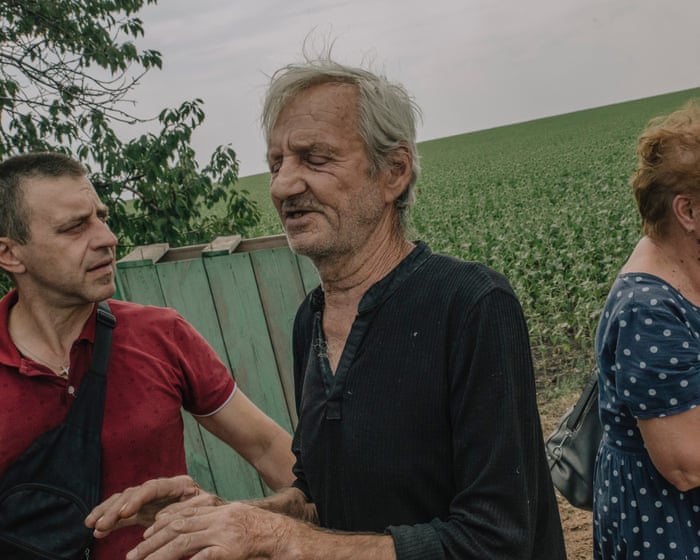The recent attack on train passengers in Cambridgeshire was truly shocking. We’ve heard stories of heroes risking their lives to help others, as well as those who hid to save themselves. If you’re like me, you’ve probably wondered: What would I do in that situation? How would I handle it? And who would I become when faced with the worst?
Some of us picture ourselves leaping into action, fighting off attackers. Others, perhaps more realistically, imagine fleeing to safety as quickly as possible. Most of us hope we’d resist the urge to run and instead stay to help those in need.
We often hear about “fight or flight” as our natural responses to danger, but it’s more complex than that. As social beings, we also have a “tend and befriend” instinct. This is common in emergencies. From my background in police psychology, I’ve seen that one major challenges during disasters—whether a plane crash or a school threat—is managing the people who rush toward the danger. They’re not necessarily confronting it, but trying to reach loved ones. When threatened, we instinctively want to gather and protect those we care about.
So what makes someone a helper? First, remember that running away doesn’t mean you’re a coward. If someone comes at you with a weapon, fear is sensible, and fleeing is a smart response. Removing yourself from danger is rational. But once you’re safe, new opportunities arise. You might not charge the attacker, but chances are, after following your survival instinct, you’ll turn to help the injured. That’s the “tend and befriend” response in action. Danger has a unique way of creating strong bonds quickly. Once the immediate threat passes, the survival of others often becomes your main concern.
Our self-image also plays a role. Have we imagined ourselves as heroes? It might sound silly, but these mental pictures create behavioral schemas—models that guide our actions in a crisis. Schemas are crucial in fast-moving situations because high stress impairs rational thinking. The prefrontal cortex, which handles logic, gets less blood flow under extreme stress, so we rely more on instinct, emotion, and pre-existing patterns. If we have a schema that includes helping, we’re more likely to act that way.
Experience matters too. Emergency responders and military personnel often excel in crises because they’ve learned to control their stress, stay calm, and assess what needs to be done. Anyone who has managed their fear can function well in such situations. Surviving past crises teaches us that we can endure terrible things and come out okay.
Another factor is how much we see ourselves as people who do good. Some regularly reflect on their contribution to the world, while others don’t. If you do, you’re more likely to help because it aligns with your identity.The truth is, disasters often unfold quickly. While moments may seem to drag on, they pass in an instant, leaving you as a survivor of the worst. It’s okay not to be okay when that happens. Right after a life-threatening event, most of us fall apart, even if only briefly. If you’re dealing with painful memories, trouble sleeping, feeling on edge, tearful, or angry after trauma, know that this is your body’s natural stress response at work. Your brain has faced something terrible and unexpected, and now it’s building a new framework to store these experiences—one where you are a survivor. This process can be rough.
But we also know that, for most people, these feelings ease over time as the initial stress fades and you integrate this new part of yourself into your identity. Sometimes, if the stress lingers, you might need help to process what you’ve been through. Remember, terrible events affect everyone differently, shaped by our past and present, creating a unique reaction for each person.
Importantly, permanent scars are not inevitable. Those involved in awful events, like the one in Cambridgeshire last weekend, may never forget, but they will adapt. Many who have endured the worst and now identify as survivors report experiencing post-traumatic growth in the long run. This doesn’t mean they’re glad it happened or that they wanted to go through it, but having survived, they often emerge stronger than before.
Emma Kavanagh is a psychologist who has worked extensively with the police and military. She is the author of books including How to Be Broken and the upcoming The Psychopath Effect, set for publication in 2026.
For support in the UK, contact Mind at 0300 123 3393. In the US, call or text Mental Health America at 988 or visit 988lifeline.org. In Australia, reach out to Beyond Blue at 1300 22 4636, Lifeline at 13 11 14, or MensLine at 1300 789 978.
Frequently Asked Questions
Of course Here is a list of FAQs about the topic of intervention during a violent attack inspired by the perspective that both stepping in and fleeing can be meaningful as discussed by Emma Kavanagh
General Beginner Questions
1 What is this topic basically about
This topic explores the difficult splitsecond decision people face during a violent attack whether to try and help or to get to safety
2 Why is fleeing considered a meaningful choice
Fleeing is a natural survival instinct Getting yourself to safety prevents you from becoming another victim and allows you to call for professional help which is a crucial and responsible action
3 What does stepping in as a hero actually mean
It doesnt necessarily mean fighting the attacker It can mean creating a distraction helping others escape or providing immediate first aid The core idea is taking action to help others at some personal risk
4 Is it wrong to feel scared and want to run away
No it is not wrong at all Fear is a normal and healthy response to danger Its your bodys way of telling you to protect yourself
5 Whats the first thing I should do if I witness an attack
The very first thing is to ensure your own safety Then immediately call emergency services if its safe to do so
Deeper Advanced Questions
6 What are the psychological factors that influence this decision
Your decision can be influenced by your past experiences training whether you know the victim your own assessment of the danger and even your innate personality traits
7 What are the potential risks of intervening directly
Direct physical intervention carries a high risk of you being seriously injured or killed It can also potentially escalate the situation putting the original victim in more danger
8 Are there effective ways to help without physically confronting an attacker
Yes These are often the safest and most effective options You can be a good witness by memorizing details loudly stating that youre calling the police or rallying others to help from a safe distance
9 How does the bystander effect play into this
The bystander effect is a phenomenon where individuals are less likely to help a victim when other people are




